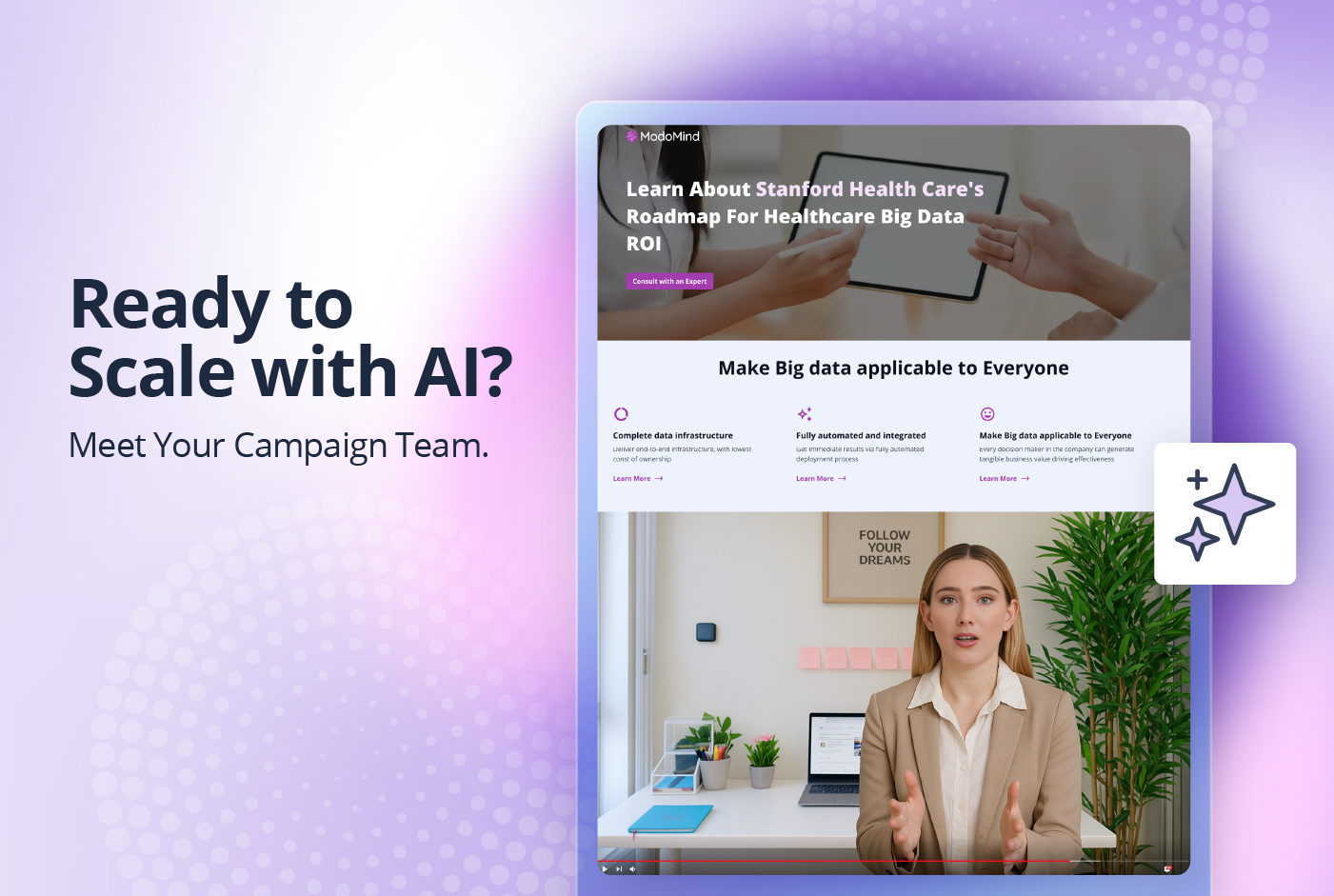Get ready for a next-gen operating model that puts the buyer at the center of the universe while empowering marketing and revenue teams
By now, most B2B marketers are acclimated — and perhaps immune — to the unprecedented pace of change. We've all seen the writing on the wall for over a decade: digital transformation and the proliferation of data and mobile devices has given rise to an empowered B2B buyer that now calls all the shots across the entire customer lifecycle.
Two years of the COVID-19 pandemic have put digital transformation initiatives into hyperdrive and compressed timetables. With digital selling now the default GTM motion, marketing has been elevated to digitize the entire GTM machine and buyer journey – and drive the right outcomes. According to a survey conducted by Folloze and the Demand Gen Report, 82 percent of marketers expect to take the lead on building a complete digital selling engine.
One thing is certain: B2B marketers face a much different and unrecognizable B2B buyer in 2022 and beyond. And, the pressure is real: According to McKinsey, 83 percent of CEOs new regard viewed the marketing team as owning their company's growth agenda. These changes underscore the need for companies to embrace a next-gen operating model that puts the buyer at the center of the universe while empowering marketing and revenue teams to execute with agility, autonomy, and insights. In the first of this two-blog series, let’s first get reacquainted with the modern B2B buyer.
Personalization is still the holy grail
For over a decade, every B2B marketer has focused on personalization to drive growth with mixed results. Some call it “account-based marketing” or others call it “better B2B marketing” – the universality of personalization hasn’t changed much. That said, in our new digital-first reality, delivering personalized buyer experiences has taken on a greater sense of urgency.
Why? By most accounts, companies that embraced buyer-centric and personalization strategies emerged from the COVID-19 pandemic unscathed – some even thriving. According to McKinsey, B2B companies that move fast, innovate, and deliver personalized experiences across the entire buyer journey – not just top of the funnel – achieved between 10-20 percent greater top-line growth.
Don't be offended that buyers don't want to talk to you
By now, most B2B marketers can recite verbatim the famous statistic from 2014 that "B2B buyers are typically 57 percent of the way to a buying decision before actively engaging with sales." Today, that number has expanded to 90 percent. At the same time, 70 percent of B2B buyers are comfortable making purchases over $50,000 without ever talking to a sales rep. An additional 27 and 11 percent would spend more than $500,000 and $1M, respectively.
What's accelerating this trend? According to the Harvard Business Review, millennials now make up more than 70 percent of B2B buyers. These buyers span the age range of 20- to 35-year-olds. I now consider myself a 50-year-old digital-first buyer and millennial at heart and prefer to first reach for a laptop to research solutions and learn from my peer networks.
This shift to digital selling doesn't portend the \"death of the sales rep.\" Rather, sellers now represent a high-value channel as part of your new digital GTM engine.
The 5% rule
At any given time, approximately 5 percent of your buyers are in-market. Think about that statistic for a moment and ask yourself: what are you doing for the remaining 95 percent of the time when your digital-first buyers aren't in-market? If you aren't using your time wisely and building trust and value with buyers, I guarantee that you will never win the deal when your buyers are ready to pull the trigger.
Can B2B become more like B2C?
Today, B2B buyers crave Amazon- or Netflix-like experiences. Still — and no offense to my B2C peeps — it's misguided to expect B2B to fully mirror B2C.
Why? Designing a personalized buyer experience and journey in the B2B world is significantly easier. In the B2C world, each buying center represents one unit. In the B2B world, this number typically inflates to 10, 20 or 30 buyers and influencers across multiple buying centers — all with different agendas. As a result, predictability is in very short supply for B2B revenue teams during their weekly pipeline call.
The Wildcard: The Great Resignation
Weekly, my account development team cites a recurring challenge of rapidly perishing account data. The age and accuracy of account data have always been a challenge, and I'd argue that a green banana has a longer shelf life than your target account data.
Why? Our marketplace now operates at the speed of light, with employees jumping ship or moving to greener pastures. Alarmingly, the pandemic also created a catalyst — called 'the great resignation' or 'reshuffle' — where employees are actively rethinking their careers, including where, how, and why they work. These individuals represent thousands of perishable sales targets. As of August 2021, an astounding 55 percent of the workforce was looking for another job. For B2B marketers that have invested time and resources to build out their target database, a massive employee migration has created a very transitory playing field.
Where do we go from here?
To build predictable growth with buyer-centricity, marketing and revenue teams are reigniting their quest for the holy grail of real-time personalization and embracing a next-gen operating model. Take our ABX Masterclass courses at your own pace to really embrace smarter B2B marketing and Account Based Experiences.



